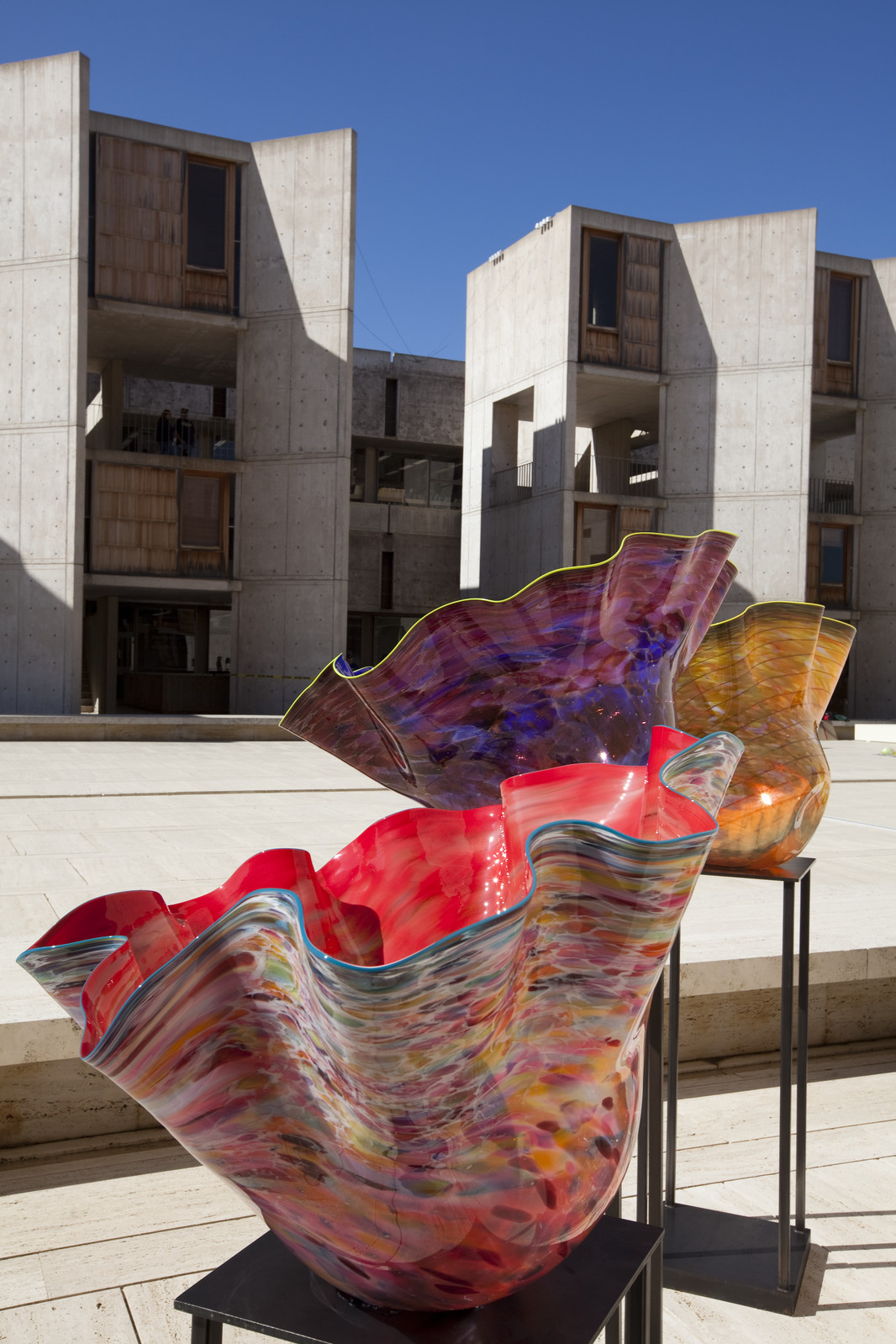Stay connected. Join our list

Dale Chihuly
V&A Chandelier, 2001

Dale Chihuly
The Sun, 2003, and Red Reeds, 2009

Dale Chihuly
Opal and Amber Towers, 2018
Dale Chihuly's passion for architecture is not a recent development – he studied interior design at the University of Washington after remodeling his mother's basement left him particularly inspired. Chihuly considers the dynamic relationship between his artwork and the space it occupies to be nearly as crucial as the work itself, which is why the first step in his creative process is to study each location to understand how his work might change one's experience within the environment. This belief holds especially true for his installations, which are designed specifically for the site in which they will be placed.
Chihuly has created countless unexpected art experiences constantly pushing the boundaries of his materials and imagination, resulting in artwork that both contrasts and complements the environment in which they occupy. This dichotomy is perhaps best exemplified in his exhibitions presented in non-traditional locations which Chihuly transforms with the color, form, and drama of his vivid glass works.

| Dale Chihuly Macchia Forest (detail), 2010 Salk Institute for Biological Studies, La Jolla, California |
One notable example of Chihuly converting a space was when he brought over ten temporary installations to the Salk Institute for Biological Studies in La Jolla, California, in 2010. Inspired by the monotone, mostly concrete landscapes of the campus, Chihuly approached the environment as a blank canvas which he covered with some of his most colorful creations to date. His response to the way that the sunshine affected his work at different times of the day was pure pleasure, saying, "I've never seen the light work more beautifully with my pieces than it did at the Salk Institute."
The central focus of the exhibition was The Sun (2010), a massive 14' installation composed of thousands of unique pieces in tones of yellow, red, cobalt, and white. The Sun was situated on the edge of the central courtyard of The Salk, where, flanked by installations of smaller scale Chihuly works, it shone over the Pacific Ocean and illuminated the structures nearby.

Chihuly at the V&A Exhibition
In 2001, Chihuly presented his work at the Victoria and Albert Museum in London for the second time in an exhibition titled Chihuly at the V&A. A one-person show at the institution was rare for an artist and Chihuly considered it "a tremendous honor." He went on to say, "I came here as a kid over forty years ago, and showing my work here is a dream come true." The show featured his vibrant glassworks among the museum’s early 19th-century ornate Victorian and Edwardian architecture. For Chihuly, the V&A was hallowed ground, as it contains one of the world's largest and more comprehensive glass collections. He especially enjoyed presenting his modern-day works adjacent to pieces that were over 3,500 years old.
Likely the most notable piece in the exhibition was his green and blue V&A Rotunda Chandelier (2001), a 27-foot-long chandelier hung in the museum's grand entrance. The work, composed of over 1,400 individual glass pieces, was created specifically for the site's 80-foot Rotunda and quickly became the most photographed object in the museum. Chihuly said of the installation, "I went with my gut when choosing the colors and shape, taking inspiration from glass being both ancient and for the 21st century."

Chihuly Sanctuary
Fred & Pamela Buffett Cancer Center, Omaha, Nebraska
In the fourth part of this month's series, we focus on Chihuly's undertaking at a particularly unique architectural setting: a place dedicated to cancer treatment. When the University of Nebraska's Fred & Pamela Buffet Cancer Center wanted to provide further respite for their patients seeking a break from constant medical care, they asked Chihuly to plan the cornerstone building of their Healing Arts Program. Chihuly approached the 2017 project inspired and driven by a steadfast belief that he could "create a space for patients, caregivers, and researchers to find a moment of peace while healing." So, he developed a serene, permanent architectural space saturated with his artwork, dubbed the Chihuly Sanctuary.
The site, a wavy custom glasshouse inspired by Chihuly's Macchia, was forged so that patients could always have a glimpse of the nearby gardens and the sun as it illuminated his artwork. The chapel-like setting even inspired Chihuly to design a new series, Glass on Glass, which he exhibited for the first time at the unveiling of the Sanctuary.

Chihuly and Architecture, our latest book, delves deeper into this topic.
To learn more, visit our shop page.